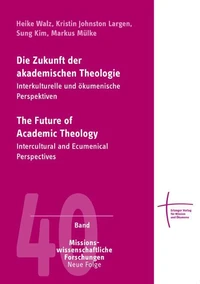Dance as Third Space. Interreligious, Intercultural, and Interdisciplinary Debates on Dance and Religion(s)
Par : , , , ,Formats :
Disponible dans votre compte client Decitre ou Furet du Nord dès validation de votre commande. Le format PDF est :
- Compatible avec une lecture sur My Vivlio (smartphone, tablette, ordinateur)
- Compatible avec une lecture sur liseuses Vivlio
- Pour les liseuses autres que Vivlio, vous devez utiliser le logiciel Adobe Digital Edition. Non compatible avec la lecture sur les liseuses Kindle, Remarkable et Sony
 , qui est-ce ?
, qui est-ce ?Notre partenaire de plateforme de lecture numérique où vous retrouverez l'ensemble de vos ebooks gratuitement
Pour en savoir plus sur nos ebooks, consultez notre aide en ligne ici
- Nombre de pages420
- FormatPDF
- ISBN978-3-647-56854-6
- EAN9783647568546
- Date de parution06/12/2021
- Protection num.pas de protection
- Taille22 Mo
- Infos supplémentairespdf
- ÉditeurVandenhoeck & Ruprecht
Résumé
Dance plays an important role in many religious traditions, in rites of passage, processions, healing rituals or festivals. But it is also controversial, especially in Christianity. Colonial European Christian discourses tend to separate dance from religion(s) and spirituality. This volume explores dance as "Third Space", following Homi Bhabha's postcolonial metaphor. The "Inter-Dance approach" combines interdisciplinary theoretical considerations with case studies.
International experts examine dance controversies and discourses from the early church to World Christianity, as well as in Hasidic Judaism, Greek mysteries, Islamic Sufism, West African Togolese religions, and Afro-Brazilian Umbanda. Christian dance theologies are unfolded and the boundary-crossing potential of dance in interreligious and intercultural encounters is explored. The volume breaks new ground in how dance as ephemeral performative art, embodied thought and gendered discourse can transform studies of religion.
International experts examine dance controversies and discourses from the early church to World Christianity, as well as in Hasidic Judaism, Greek mysteries, Islamic Sufism, West African Togolese religions, and Afro-Brazilian Umbanda. Christian dance theologies are unfolded and the boundary-crossing potential of dance in interreligious and intercultural encounters is explored. The volume breaks new ground in how dance as ephemeral performative art, embodied thought and gendered discourse can transform studies of religion.
Dance plays an important role in many religious traditions, in rites of passage, processions, healing rituals or festivals. But it is also controversial, especially in Christianity. Colonial European Christian discourses tend to separate dance from religion(s) and spirituality. This volume explores dance as "Third Space", following Homi Bhabha's postcolonial metaphor. The "Inter-Dance approach" combines interdisciplinary theoretical considerations with case studies.
International experts examine dance controversies and discourses from the early church to World Christianity, as well as in Hasidic Judaism, Greek mysteries, Islamic Sufism, West African Togolese religions, and Afro-Brazilian Umbanda. Christian dance theologies are unfolded and the boundary-crossing potential of dance in interreligious and intercultural encounters is explored. The volume breaks new ground in how dance as ephemeral performative art, embodied thought and gendered discourse can transform studies of religion.
International experts examine dance controversies and discourses from the early church to World Christianity, as well as in Hasidic Judaism, Greek mysteries, Islamic Sufism, West African Togolese religions, and Afro-Brazilian Umbanda. Christian dance theologies are unfolded and the boundary-crossing potential of dance in interreligious and intercultural encounters is explored. The volume breaks new ground in how dance as ephemeral performative art, embodied thought and gendered discourse can transform studies of religion.



